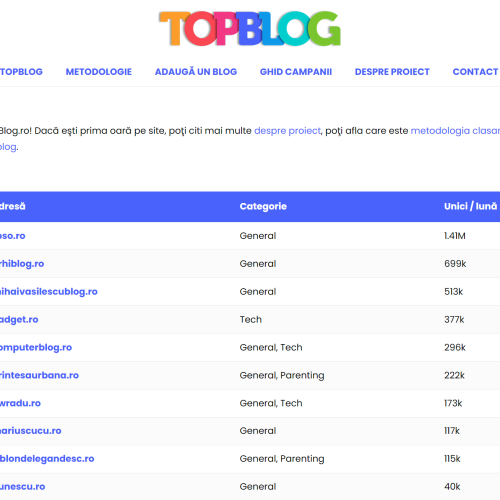Cum te diferențiezi atunci când ai peste 170 de competitori care vând același lucru? Asta mă întrebam aseară în timp ce citeam documentația depusă de Casper pentru a se lista la bursă. [paranteză rapidă: Casper e un brand american de saltele vândute online și care a avut o creștere uriașă în cei 5 ani de când s-a lansat]
Răspunsul, în cazul lor: arunci cu bani în marketing și branding. Mulți, foarte mulți. După care te rogi să nu facă lumea retur la ce a cumpărat. Probabil se va prăbuși ca un castel de nisip (vezi ce s-a întâmplat anul trecut cu WeWork), au gardul vopsit frumos, însă matematica nu dă, fundația nu pare deloc solidă și nici strategia lor de creștere nu este sustenabilă.
Dar dacă lucrezi în marketing, îți recomand să arunci un ochi peste documentul lor, să citești în special ce au scris la partea legată de riscuri în campaniile cu influencers și alte canale de marketing online. E o lecție bună referitoare la ce se poate întâmpla când îți construiești casă pe canale închiriate. Am dat mai jos copy-paste la câteva paragrafe salvate de mine. Mai e o parte interesantă pe care am salvat-o, despre cum le-au crescut comenzile online plasate din orașele unde au deschis magazine fizice.
Și aceste 2 articole mai vechi despre marketingul Casper, în cazul în care nu le știai deja:
1. The War To Sell You A Mattress Is An Internet Nightmare: Why did Casper sue a mattress blogger? A closer look reveals a secret, multimillion-dollar battle to get you into bed.
2. Peek Inside Casper’s $370 Million Content Marketing Universe
***
RISKS:
Use of social media and influencers may materially and adversely affect our reputation or subject us to fines or other penalties.
We use third-party social media platforms as marketing tools, among other things. For example, we maintain Instagram, Snapchat, Facebook, Twitter and Pinterest accounts, as well as our Casper Sleep Channel on YouTube and Spotify. We also maintain relationships with thousands of social media influencers and engage in sponsorship initiatives. As existing e-commerce and social media platforms continue to rapidly evolve and new platforms develop, we must continue to maintain a presence on these platforms and establish presences on new or emerging popular social media platforms. If we are unable to cost-effectively use social media platforms as marketing tools or if the social media platforms we use do not evolve quickly enough for us to fully optimize such platforms, our ability to acquire new consumers and our financial condition may suffer. Furthermore, as laws and regulations rapidly evolve to govern the use of these platforms and devices, the failure by us, our employees, our network of social media influencers, our sponsors or third parties acting at our direction to abide by applicable laws and regulations in the use of these platforms and devices or otherwise could subject us to regulatory investigations, class action lawsuits, liability, fines or other penalties and have a material adverse effect on our business, financial condition and operating results.
In addition, an increase in the use of social media for marketing may cause an increase in the burden on us to monitor compliance of such materials, and increase the risk that such materials could contain problematic product or marketing claims in violation of applicable regulations. For example, in some cases, the Federal Trade Commission, or the FTC, has sought enforcement action where an endorsement has failed to clearly and conspicuously disclose a material relationship between an influencer and an advertiser. While we ask influencers to comply with the FTC regulations and our guidelines, we do not regularly monitor what our influencers post, and if we were held responsible for the content of their posts, we could be forced to alter our practices, which could have material adverse effect on our business, financial condition, and results of operations.
[…]Our business relies heavily on email, and any restrictions on the sending of emails or an inability to timely deliver such communications could materially adversely affect our net revenue and business.
Our business is highly dependent upon email for promoting our website and products. Periodic promotions offered through emails sent by us generate a portion of our net revenue. We provide periodic emails to customers and other visitors informing them of what is available for purchase on our website that day, and we believe these messages are an important part of our customer experience and help generate a portion of our net revenue. If we are unable to successfully deliver emails or other messages to our subscribers, or if subscribers decline to open our emails or other messages, our net revenue and profitability would be materially adversely affected. Changes in how webmail applications organize and prioritize email may reduce the number of subscribers opening our emails. For example, Google’s Gmail service has a feature that organizes incoming emails into categories (for example, primary, social and promotions). Such categorization or similar inbox organizational features may result in our emails being delivered in a less prominent location in a subscriber’s inbox or viewed as „spam” by our subscribers and may reduce the likelihood of that subscriber opening our emails. Actions by third parties to block, impose restrictions on or charge for the delivery of emails or other messages could also adversely impact our business. From time to time, internet service providers or other third parties may block bulk email transmissions or otherwise experience technical difficulties that result in our inability to successfully deliver emails or other messages to third parties. Changes in the laws or regulations that limit our ability to send such communications or impose additional requirements upon us in connection with sending such communications. Our use of email and other messaging services to send communications about our sites or other matters may also result in legal claims against us, which may cause us increased expenses, and if successful might result in fines and orders with costly reporting and compliance obligations or might limit or prohibit our ability to send emails or other messages. We also rely on social networking messaging services to send communications and to encourage customers to send communications. Changes to the terms of these social networking services to limit promotional communications, any restrictions that would limit our ability or our customers’ ability to send communications through their services, disruptions or downtime experienced by these social networking services or decline in the use of or engagement with social networking services by customers and potential customers could materially adversely affect our business, financial condition, and operating results.
[…]To continue to grow our business, we must acquire new consumers as well as retain existing customers in a cost-effective manner. We continually evolve our marketing strategies, adjusting our messages, the amount we spend on advertising and the channels in which we spend. We have made, and we expect that we will continue to make, significant investments in attracting new consumers, including through traditional, digital, social media and original Casper content. It is critical for us to maintain reasonable costs for these marketing efforts relative to sales derived from new consumers. From 2017 through September 30, 2019, while growing our e-commerce channel, we have maintained ‘first purchase profitable’ e-commerce economics. We believe our multi-channel expansion creates synergies and that these channels, to date, have proven to be complementary, not cannibalistic. In fact, for the nine months ended September 30, 2019, our direct-to-consumer sales in cities where we have opened retail stores have grown over 100% faster on average than cities without a Casper retail store, and we expect our marketing efficiency (which we define as net revenue as a percentage of total media spend over a specific time) to remain generally stable despite increased competition. As we continue to launch new products and improve existing products, we expect customers generating repeat revenue to grow due to our efforts to create a differentiated and joyful experience, eliminating friction and boundaries. Repeat customers, who have purchased a Casper product at least once before through our direct-to-consumer channel, represent over 16% of our customer base from inception through September 30, 2019. […] Our presence in physical retail stores has proven complementary to our e-commerce channel, as we believe interaction with multiple channels has created a synergistic „network effect” that increases system-wide sales as a whole. Driving continued success in our retail store expansions will be an important contributor to our future growth and profitability.




